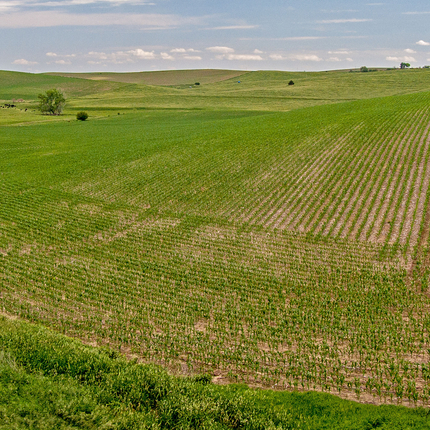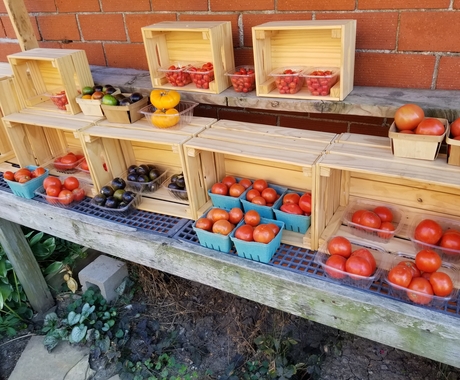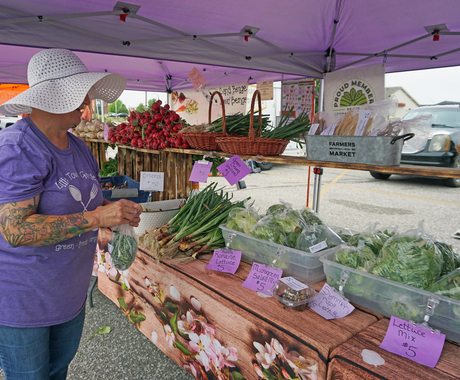By Kerry Hoffschneider, reprinted with permission from Western Ag Reporter, Thursday, July 14, 2016, Billings, Montana
The Center for Rural Affairs is a non-profit 501(c) 3 that was started in 1973 to address issues impacting their mission to, “establish strong rural communities, social and economic justice, environmental stewardship and genuine opportunity for all while engaging people in decisions that affect the quality of their lives and the future of their communities.”
“We are unapologetically rural,” said Brian Depew – Executive Director who is leading the center on a host of rural issues. One of their ongoing battles impacts nearly every, single farmer across the nation – Federal Crop Insurance Reform.
“It’s hard to imagine an issue that ties back to the Center for Rural Affairs and our core values more than Federal Crop Insurance Reform. It is tied to the structure of agriculture and our economy at large. It’s about society asking ourselves where we want to spend our limited public tax dollars on. Do we want to support the family farm structure of agriculture or the corporate farm structure of agriculture? These are the types of decisions we need to decide as a democracy as we envision public policy.”
So what’s the rub with the current federal crop insurance program? John Crabtree, a spokesman for the center, explained they are addressing the issue in four parts: There needs to be a cap on crop insurance premium subsidies. More focus needs to be on true conservation practices. There needs to be more access for a diversity of farmers to support entrepreneurialism and balance risk. The program needs increased transparency for taxpayers regarding the delivery of crop insurance funds and who is actually receiving funds.
“I think it’s important to reiterate that a crop insurance program backed by the federal government is an important component of having a farm safety net,” Crabtree said. “We need crop insurance but there are problems with the current program.”
The current crop insurance program, Crabtree explained, is the result of the last Farm Bill that did away with direct payments. “Basically, the last Farm Bill said, instead of making direct subsidies to farmers, we are going to subsidize crop insurance.”
According to 2012 statistics shared by the Center for Rural Affairs compiled by Dennis A. Shields, Specialist in Agricultural Policy, Crop Insurance costs taxpayers $14 billion. The Federal Government pays insurance companies a guaranteed 14 percent administrative profit. It costs taxpayers $1.4 billion to cover insurance companies administrative and operating expenses. Program losses (or insurance for crop insurance companies) costs taxpayers $5.37 billion. Sixty-two percent of premium payments are paid by the government at a taxpayer cost of $7.1 billion, with 38 percent paid by farmers.
“The Federal Government pays 62 percent on average on crop insurance and the problem is there are no limits. The unlimited portion of the crop insurance program is new to this Farm Bill,” Crabtree began. “That means, for example, if I wanted to farm the entire state of Iowa, the federal government would pick up that 62 percent portion of my tab for crop insurance. It does not matter if I farm 200 or 50,000 acres or more. Every acre is subsidized, every year, despite profitability or production.”
“In 2011 the General Accounting Office (GAO) did a report. During 2011, there were 26 farm entities across the country that received $1 million or more each in crop insurance payments alone. The current program subsidizes the biggest producers of a few commodity crops. Those large commodity farms tend to use that risk reduction and that subsidy to get larger and more specialized. This crop insurance program, with an unlimited cap, helps cause land to be bid higher and higher cash rent prices,” he said.
“That unlimited cap and consolidation puts beginning and mid-size farmers at a competitive disadvantage. We know we need a farm safety net, but we are asking for a cap. If you are farming, say 50,000 acres, there needs to be a different percentage paid out of your own pocket. There will be a lot of discussion around what the appropriate cap will be; but, it’s important we start addressing it.”
“A second aspect of the crop insurance issue is the current program causes more environmental harm that it should. There is a conservation compliance portion but it’s not broad enough. Currently, it says if you participate in farm programs, you have to maintain basic soil conservation. You have to do some paperwork and it’s a self-evaluator tool. The task of filling out the form is minimal and there is no outside enforcement,” Crabtree said.
“The best stewards of our soils out there are farmers but not every one of them is the same steward across the board. There is no incentive in the current program. Why not reward people who are doing far more than others? Why are the premiums, cost of insurance and the subsidies exactly the same for every farm when they are not all protecting the land and water quality the same?” He pointed out.
“With the exception of six states – Montana, North Dakota, South Dakota, Minnesota and Nebraska, there is no penalty if you plow up virgin grasslands or marginal rangeland. There is a lot of land in this country outside those six states that should not be in crop production and should be put into grass,” he said.
Another issue is access. Crabtree said the current federal crop insurance program does not allow equal access to all farms in all locations, “In fact, only about ¼ of all farms identified by the census of agriculture actually have access to crop insurance. Not every farm in the country raises corn, soybeans, wheat and cotton. Yes, crop insurance programs were initially developed for large commodity crops. However, we should work towards fair and equal access to all types of farms. For example, there’s a young farmer I know in Iowa who has grown organic oats and keeps asking for a crop insurance policy but cannot gain access to one. We believe it’s reasonable to expect the United States Department of Agriculture (USDA) risk management to work to provide more policies for farmers like him.”
Crabtree did note the 2014 Farm Bill created an insurance product called, Whole Farm Revenue Protection, “For example, if you are raising five or six different crops and a couple types of livestock, your policy protects the revenue of the entire farm. This product absolutely rewards diversity and the USDA needs to do more to let people know it’s available. The reason it has been a slow adopter is that it’s ‘easier’ to create insurance policies for single crops on a farm. We believe Whole Farm Revenue option really begins to encourage entrepreneurial farming. It’s a good start.”
Finally, Crabtree said the Center for Rural Affairs wants more transparency in the crop insurance program, “There is no federal transparency on how much they are subsidizing the largest farms and insurance companies. We have the GAO report, but that’s it. We cannot go and access who the recipients are. As a society, we have said we want a safety net for farmers. But, we never argued that we wanted that safety net to be a secret. We believe taxpayer subsidies are a good thing for creating a safety net – but is it good for 26 farms to get more than a million dollars? Taxpayers have a right to know the imbalance.”
Depew reiterated that it’s simply important that citizens be informed about this issue impacting all of us, “I think as Americans we can come together and agree that there should be a cap on crop insurance. Corporate welfare and runaway government spending can lead us back to the same conclusion. This is not a limit on the size of farming. It’s deciding when the farmer is assuming more of the risk as an individual operator.”




